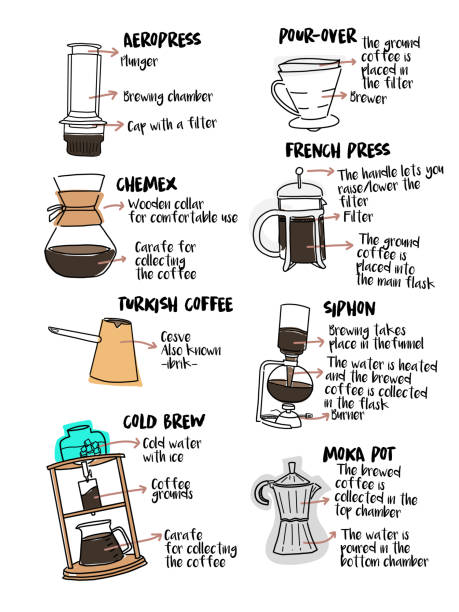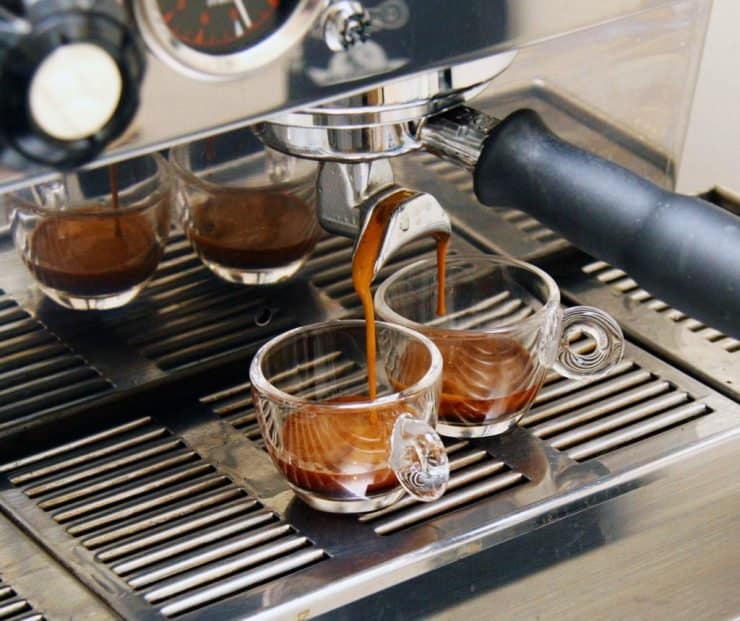The Scientific Research Behind Coffee Brewing: Just How Temperature and Time Affect Your Beverage
Understanding the scientific research behind coffee brewing discloses that temperature and time are not simple variables but essential aspects that determine the drink's taste profile and general high quality. The optimum brewing temperature level typically falls between 195 ° F and 205 ° F, while the period of extraction varies dramatically throughout different methods. This interplay of aspects can result in a cup that is either disappointing or fascinating. As we explore the nuances of these elements, the question occurs: how can one effectively equilibrium temperature level and time to attain that perfect mixture?
The Chemistry of Coffee Removal
The chemistry of coffee removal dives into the complex procedures that transform raw coffee beans into the aromatic drink delighted in worldwide. This improvement primarily involves the solubility of various compounds present in the beans, which are influenced by variables such as work dimension, water quality, and the developing approach used.
During the developing procedure, warm water serves as a solvent, drawing out soluble substances, including caffeine, sugars, acids, and lipids, from the coffee grounds. Each compound adds to the flavor account, fragrance, and body of the final beverage. Acids are accountable for brilliant and zesty notes, while oils contribute to an abundant mouthfeel.
The removal process is not uniform; different compounds liquify at various prices. The first stages of developing remove acids and sugars, bring about a positive acidity, while prolonged extraction can result in anger because of over-extraction of unfavorable substances. Recognizing these chemical interactions is crucial for maximizing developing techniques, as the equilibrium in between extraction time and water temperature level can considerably influence the total high quality of the coffee. Inevitably, grasping the chemistry of coffee extraction is vital to accomplishing a all-round and savory cup.
Ideal Brewing Temperatures
Locating the best developing temperature is crucial for opening the full capacity of coffee tastes and scents - coffee brewing methods. Study shows that the ideal array for brewing coffee exists in between 195 ° F to 205 ° F(90 ° C to 96 ° C) Within this range, the removal procedure efficiently dissolves the desirable soluble substances in coffee beans, bring about a well balanced and flavorful cup
Brewing at lower temperature levels, such as listed below 195 ° F(90 ° C ), may result in under-extraction, yielding a weak and acidic mixture with muted flavors. Alternatively, developing at temperatures going beyond 205 ° F(96 ° C) can bring about over-extraction, generating a rough and bitter taste as a result of the extreme dissolution of unwanted compounds, such as tannins.
Moreover, the excellent developing temperature can vary relying on the coffee bean kind and roast degree. For circumstances, lighter roasts typically take advantage of a little higher temperatures to improve their complicated taste profiles, while darker roasts may be better suited to lower temperatures to alleviate resentment.
Eventually, maintaining precision in brewing temperature levels is important for accomplishing an unified balance of tastes, ensuring that every cup of coffee provides a satisfying sensory experience.
Influence of Developing Time
Brewing time plays an essential role in establishing the taste account and total high quality of coffee. Shorter brewing times can result in under-extraction, leading to a weak or sour taste, as not adequate soluble substances are liquified.
Ideal brewing time differs depending upon the approach utilized and the grind dimension of the coffee. As an example, a French press commonly needs about 4 minutes, while coffee removal is normally completed within 25 to 30 secs. It is necessary to adjust developing time in combination with various other variables, such as water temperature level and coffee-to-water proportion, to achieve the wanted taste profile.
Recognizing the effect of developing time enables coffee fanatics to refine their developing techniques, inevitably boosting the sensory experience of their mug (coffee brewing methods). With careful attention to this variable, one can open the complete potential of the coffee, revealing its special qualities and subtleties
Brewing Techniques and Their Results

For circumstances, methods like French press and cold brew permit a much longer steeping time, leading to a fuller body and robust flavor because of enhanced extraction of oils and soluble solids. On the other hand, espresso developing makes use of high stress and a shorter removal time, creating a concentrated shot that emphasizes extreme tastes and an abundant crema.
Pour-over methods, such as Chemex or V60, use a more regulated removal procedure, enabling the brewer to adjust flow rate and water circulation, which can enhance brightness and clearness. On the other hand, percolation methods cycle water through the coffee grounds several times, bring about a more powerful, typically bitter flavor.
Lastly, the usage of paper filters versus metal filters can additionally affect the final preference; paper filters usually produce a cleaner mug by capturing oils and great bits, while steel filters enable more oils to travel through, adding to a fuller mouthfeel - coffee brewing methods. Recognizing these nuances can boost the coffee experience dramatically
Tips for Perfecting Your Brew
A well-executed brew can transform even the most basic coffee into an amazing experience. Grind the beans just before making to maximize freshness, ensuring the work size matches your brewing technique-- coarser for French press and finer for coffee.
Water quality plays a crucial role; use filteringed system water devoid of pollutants. The optimal brewing temperature ranges in between 195 ° F and 205 ° F(90 ° C to 96 ° C ) Also warm can swelter the coffee, while also great might under-extract flavors.
Timing is equally important. For immersion methods, steeping for 3 to 5 minutes is ideal, whereas drip approaches normally take about five mins. Try out brew times to discover your favored toughness.

Conclusion
In recap, the elaborate connection between temperature level and time is critical in the coffee developing process. Recognizing these scientific concepts equips people to fine-tune their developing techniques, inevitably leading to a much more enjoyable Home Page and well balanced coffee experience.
Recognizing the science behind coffee developing exposes that temperature level and time are not simple variables but essential elements that determine the beverage's taste profile and overall quality. Understanding these chemical interactions is crucial for enhancing developing methods, as the balance between removal time and water temperature can dramatically influence the overall quality of the coffee.Brewing time plays an essential duty in figuring out the taste account and overall quality of coffee. By concentrating on these components-- bean quality, grind dimension, water temperature level, soaking time, and proportion-- you can elevate your coffee brewing process, resulting in a consistently remarkable cup.
In recap, the elaborate partnership between temperature level and time is critical in the coffee brewing process.
Comments on “A Comprehensive Overview to Different Coffee Brewing Methods You Should Attempt”